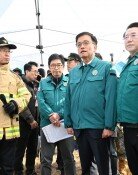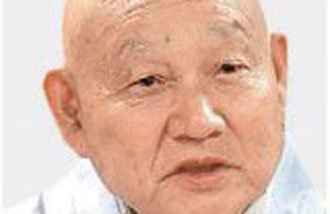Ship-to-Ship Missile Test Could Disrupt Navy Build Up Plans
Ship-to-Ship Missile Test Could Disrupt Navy Build Up Plans
Posted September. 23, 2005 07:33,
It has been revealed that some types of ship-to-ship guided missiles intended for deployment on military vessels have been mass-produced without undergoing test-firing procedures.
Therefore, if the test-firings of the missile types in question, set for after November, fail, there are concerns of a disruption in the navys plans for a military buildup.
According to the Ship-to-Ship Guided Missile Test Results submitted by the Ministry of Defense to Grand National Party Rep. Hwang Jin-ha of the National Assemblys Defense Committee on September 22, the Agency for Defense Development (ADD) began developing ship-to-ship missiles in 1993, making two types of missiles-one made of parts imported from overseas in October 2003, and one made of domestic parts.
The ship-to-ship missile project seeks to produce hundreds of 150 kilometer-range missiles at a cost of 686.9 billion won, and is a core project to strengthen the navys offensive capabilities.
The problem is that the ADD suggested the defense ministry set standards for mass production of the missile type made of Korean parts after receiving an appraisal that the missile was suitable for battlefield use from the navy despite the fact that it had yet to conduct a test-firing of the missile. The Ministry of Defense accepted the ADDs request on the condition of acceptable post test-firing results, according to the ministrys internal investigation.
The defense ministry concluded a contract with a manufacturer and began producing dozens of the missiles in its first production run at the end of last year.
The investigation report points out that military authorities plan to conduct the test-firing of the missiles in question after November, but if the test fails, there are concerns of a massive disruption in the missile deployment plan of navy war vessels such as destroyers, patrol vessels and next-generation high-speed vessels.
Sang-Ho Yun ysh1005@donga.com







